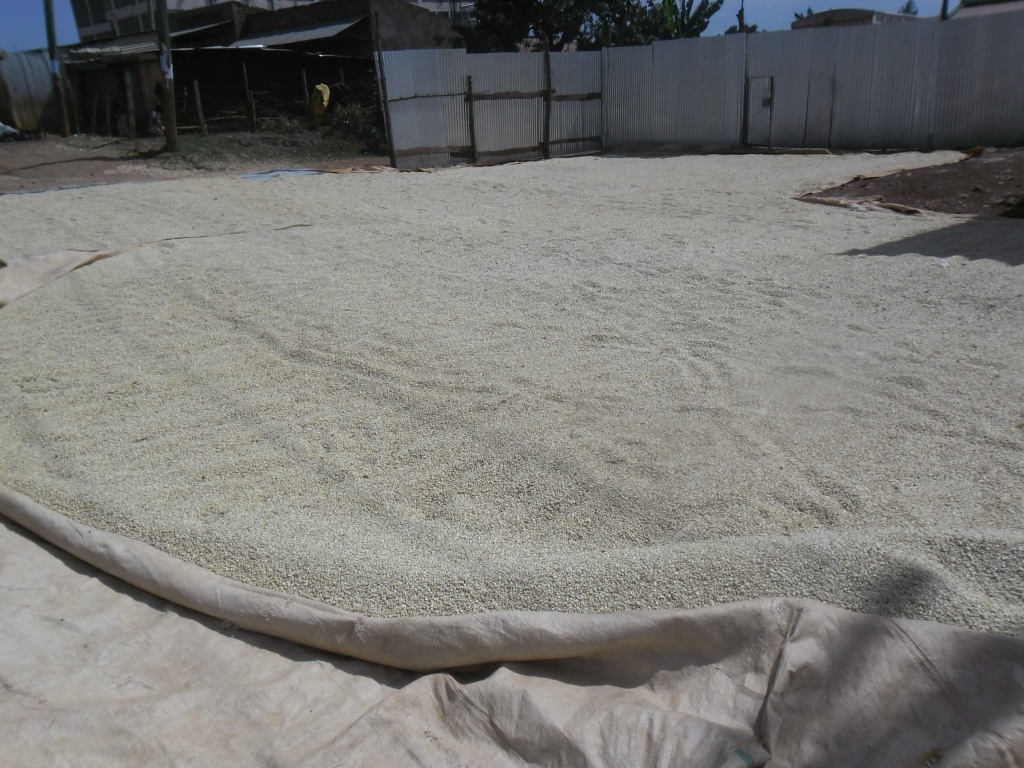
Farmer displays banana fibre on the sun to dry. Photo courtesy.
Integrated Community Organization for Sustainable Empowerment and Education for Development (ICOSEED) initiative in Kirinyaga County has created over 100 jobs for the youth and women in the county who were previously jobless by turning banana pseudo stems into fibre that can be used to make fabrics for bags and table mats for sale.
This initiative was founded by Mr. Patrick Gatere in 2015 to bring into good use banana stems which farmers were felling down to enjoy the banana fruits then could use the stems to feed their cattle or discard it to decay in the farm.
RELATED STORY: Researchers: Banana pseudo stems are rich source of quality fibres
The ICOSEED banana pseudo stems’ value chain has many departments and stages where people are employed to work. “Our processing system has enabled us to employ youth and women in transportation and extraction of fibers, twining and coloring, and accessory making hence reducing crime rate among the youth who were joblessness,” said Gatere.
In addition he says the initiative has strengthened the banana farmer groups with trainings in agronomy, increasing yields by 18 per cent hence providing an alternative source of income for 400 farmers who benefit from the program every year.
Farmers are paid for the fibre extracted from their banana pseudo stems at Sh25 per kg. The fibre is handed over to youth for brushing and finally to women for twining and dying. The coloured threads are passed on to hand loom operators who make fabric. The fabric is used to make bags, clutch purse, table mats and wall hangings.
The Kutus based initiative’s target market includes exhibitions, online shopping, curio shops, tourist hotels, churches and super markets.
RELATED STORY: KALRO selling high quality Banana Tissue culture seedlings
ICOSEED’s efforts attracted National Environment Trust Fund (NETFUND) which gave financial support to the tune of Sh812, 500 as well as technical and business support skills enabling the initiative purchase three more extractors and four more handlooms to increase production capacity and produce quality products.
In 2017 and 2016 ICOSEED won Switch Africa Green (SAG) SEED challenge Award and Green Innovation Awards in the Civil Societies category respectively. Gatere says that their future plan is to increase production and number of farmers who supply them with banana stems.
RELATED STORY: Group earns from ulcer treating banana peels powder
“We plan to Increase the number of farmers supplying banana stems from 400 to 9,000 by 2018, Scale up the production capacity of banana fibre by buying new machinery, including additional mobile fibre extractors, diversify the product range to include sanitary towels within the next two years and establish two new production sites in key banana production areas like Meru and Kisii by 2022,” he said.
ICOSEED can be reached on This email address is being protected from spambots. You need JavaScript enabled to view it. or Tel: +254 720468046
ICOSEED
Write comment (0 Comments)

















